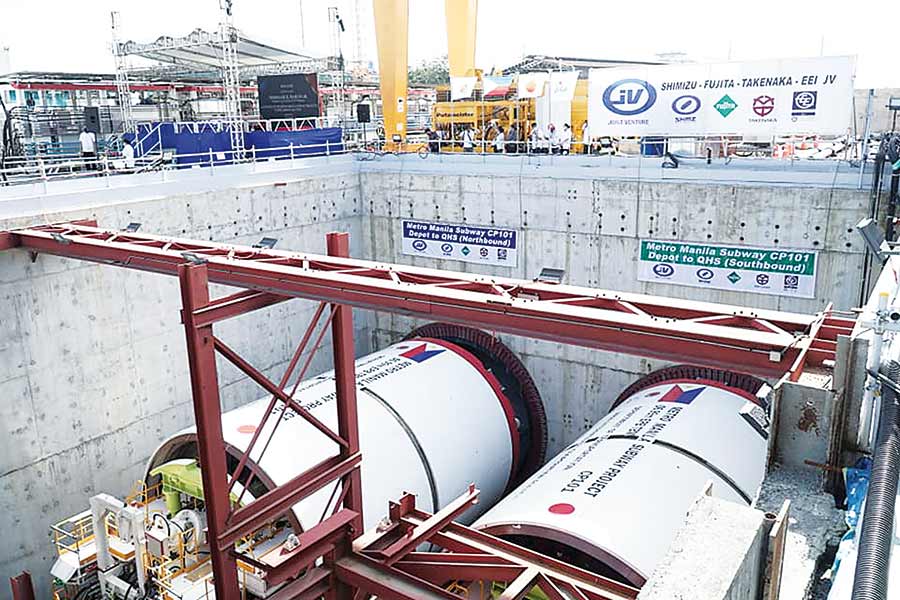The Department of Transportation (DOTr) yesterday officially started the construction of the P21.13-billion two additional underground stations of the Metro Manila Subway project (MMSP) that will connect Quezon City and Pasig City.
DOTr secretary Jaime Bautista led the groundbreaking ceremony for the project’s Contract Package 103 (CP103) which involves civil works — build-only contract for the two underground stations, namely, the Anonas and Katipunan, which are now referred to as Anonas and Camp Aguinaldo. This also covers the tunnels situated within Quezon City, with a total route length of 6.6 kms, connecting Quezon City and Pasig City.
At the groundbreaking ceremony, Bautista emphasized the far-reaching benefits of the big-ticket railway project such as comfort and convenience for commuters, the creation of employment opportunities, and the Philippines’ economic development.
“Today is another critical step towards that aspiration towards the convenience and comfort of Filipino commuters towards a transport infrastructure that catalyzes economic rebound,” Bautista said.
“The socio-economic benefits of the MMSP even exceed our expectations,” he added.
The MMPS contract package 103 was awarded to Sumitomo Mitsui Construction Co. Ltd to construct the two stations which will have interconnection Metro Rail Transit line 7, MRT line 3, and LRT-1.
Bautista said MMSP also involves the construction of the 30.37-hectare train depot in Valenzuela, which will also be the location for the Philippines Railway Institute.
The construction is estimated to create more than 18,000 jobs and the entire project is expected to be operational by 2028.
The Japan-funded Metro Manila Subway will cut across eight cities that will stretch from Valenzuela City to FTI-Bicutan in Parañaque City with a spur line to NAIA Terminal 3 in Pasay City.
With a total 33-km route length and 17 stations, the country’s first underground railway system aims to cut travel time between Quezon City and Ninoy Aquino International Airport in Pasay City to just 45 minutes.
Once operational, the railway system can serve up to 519,000 passengers daily.




